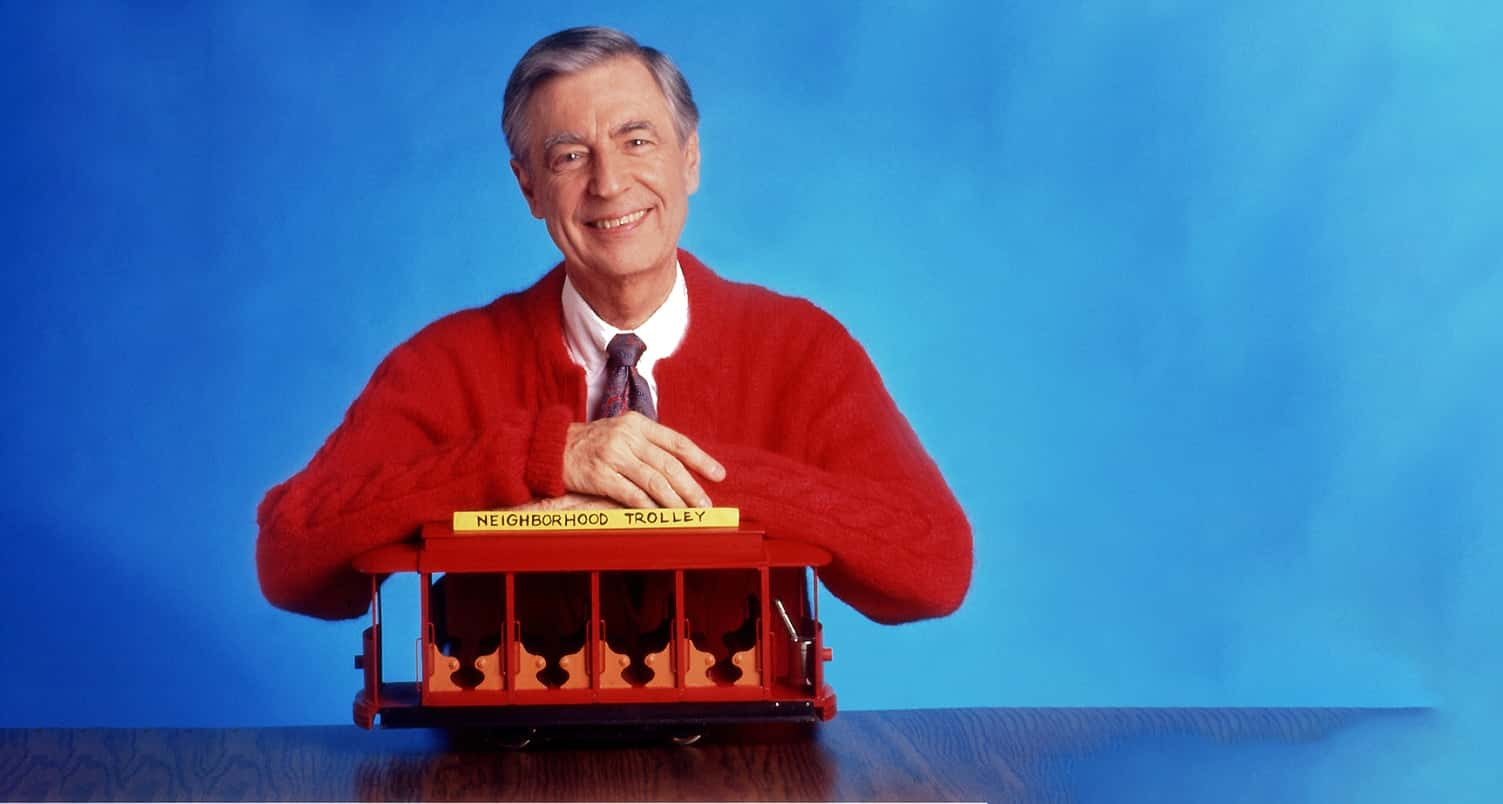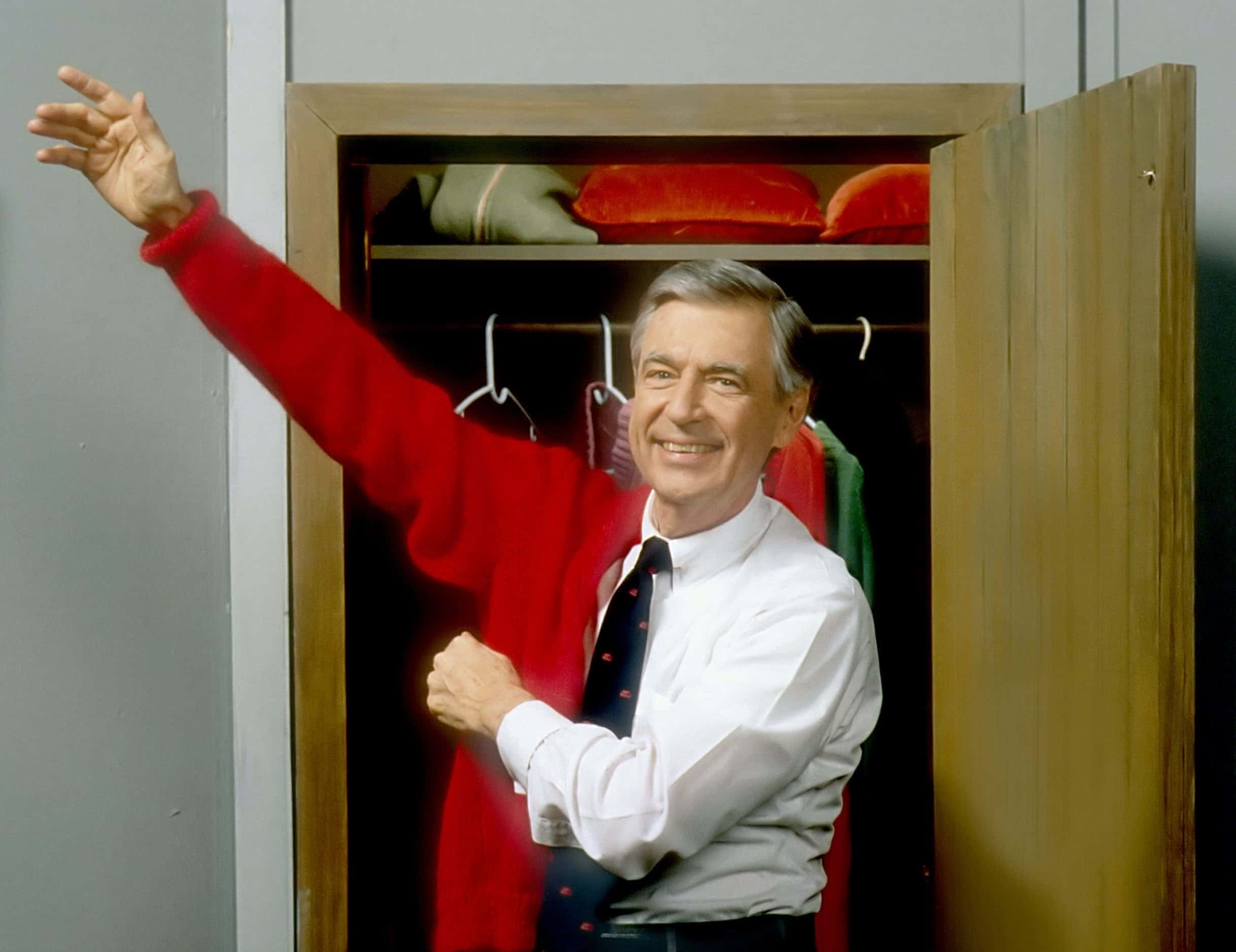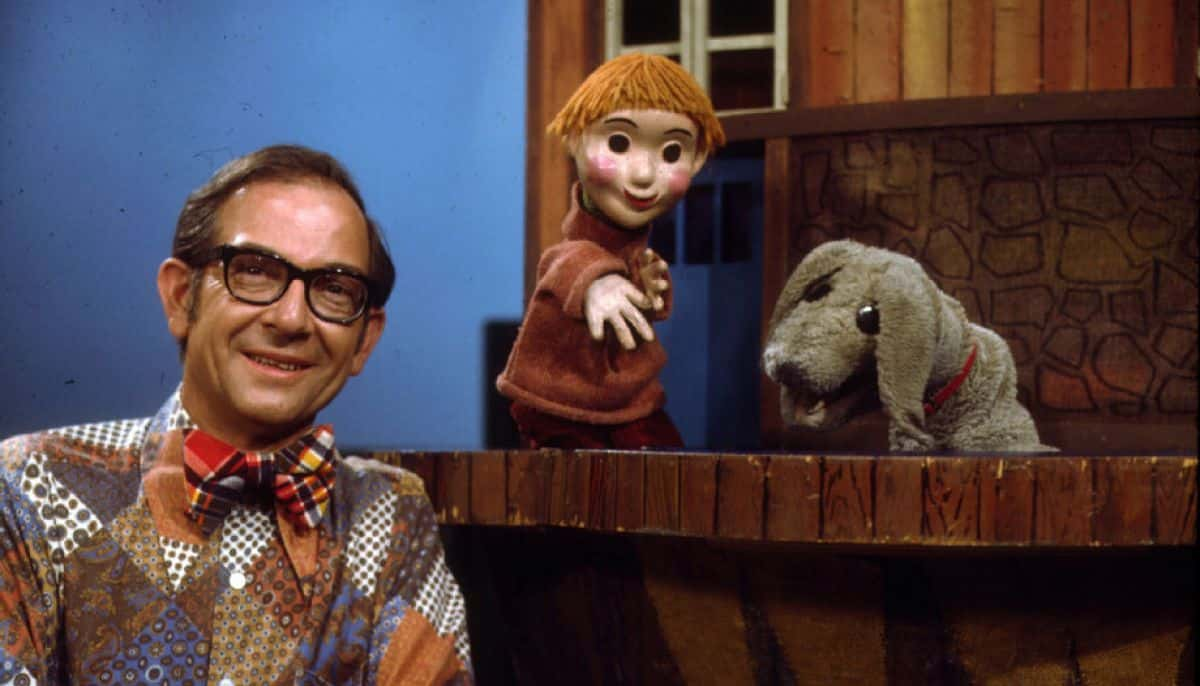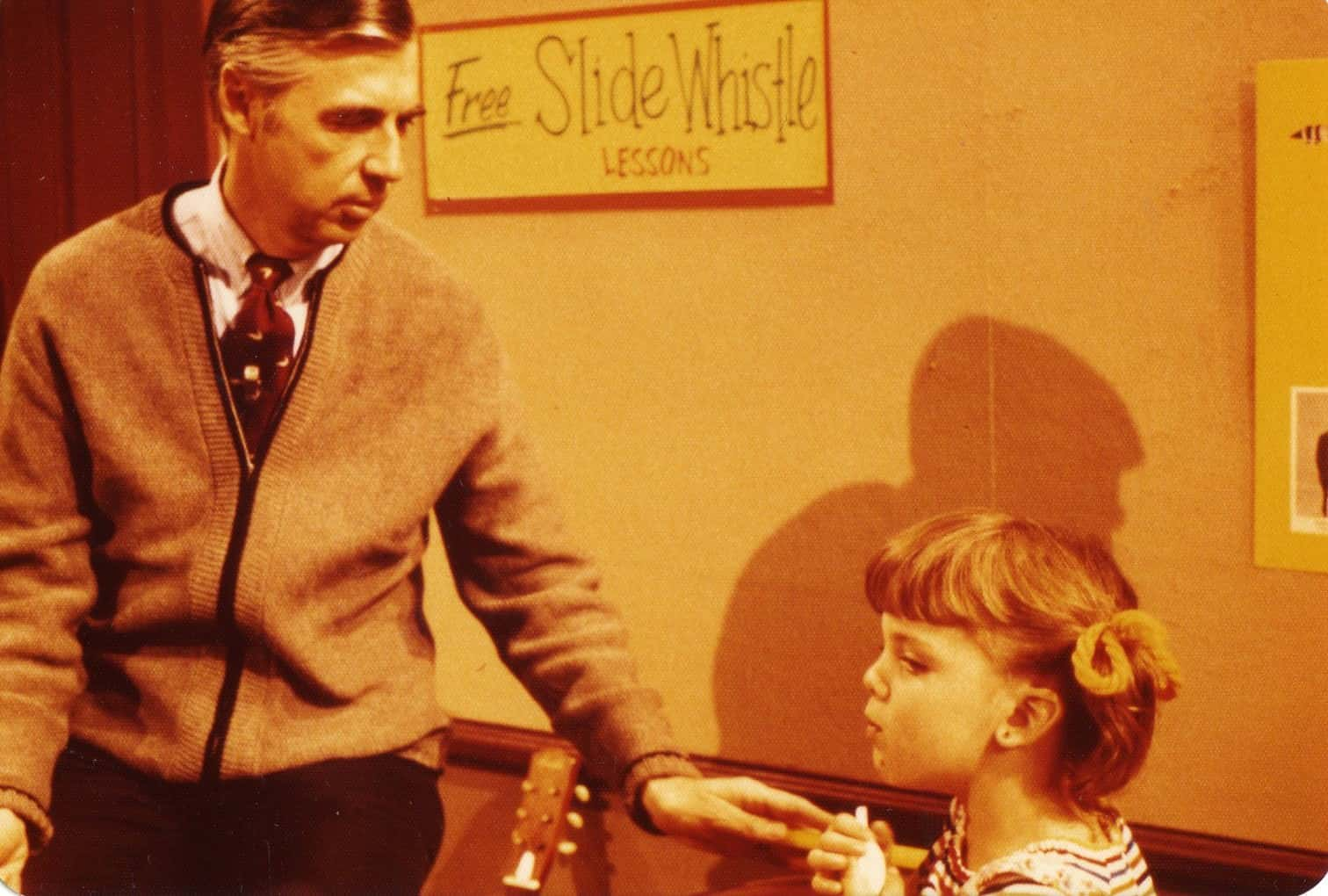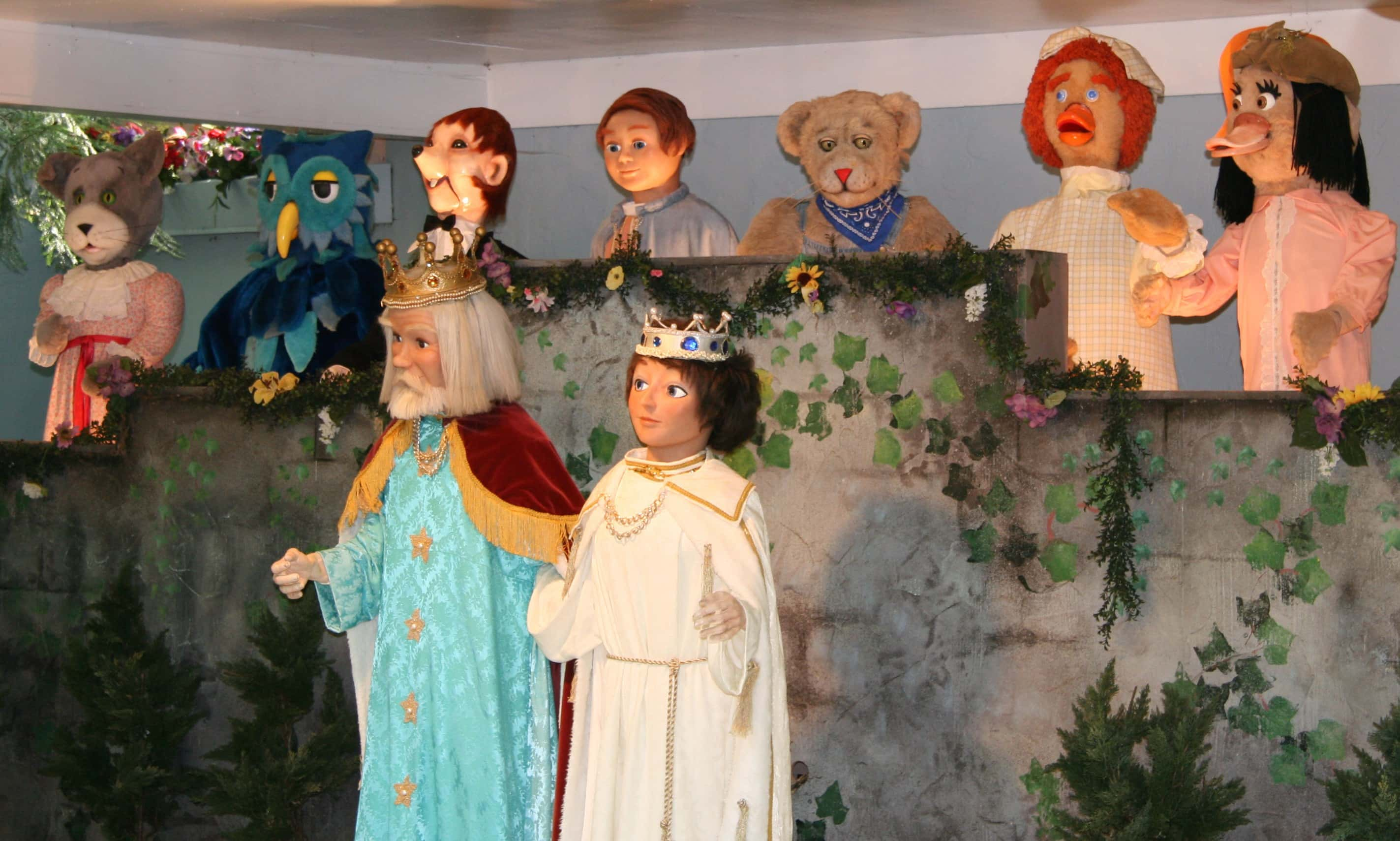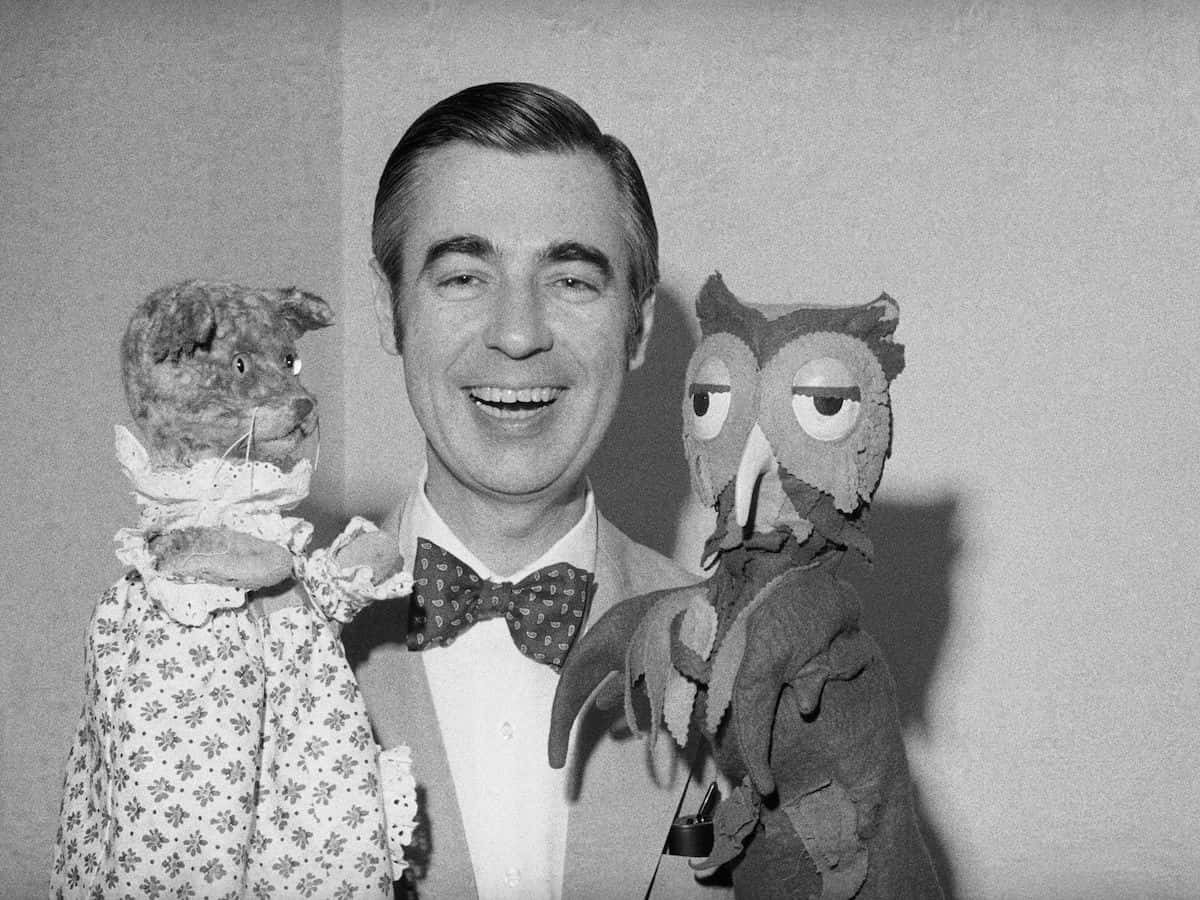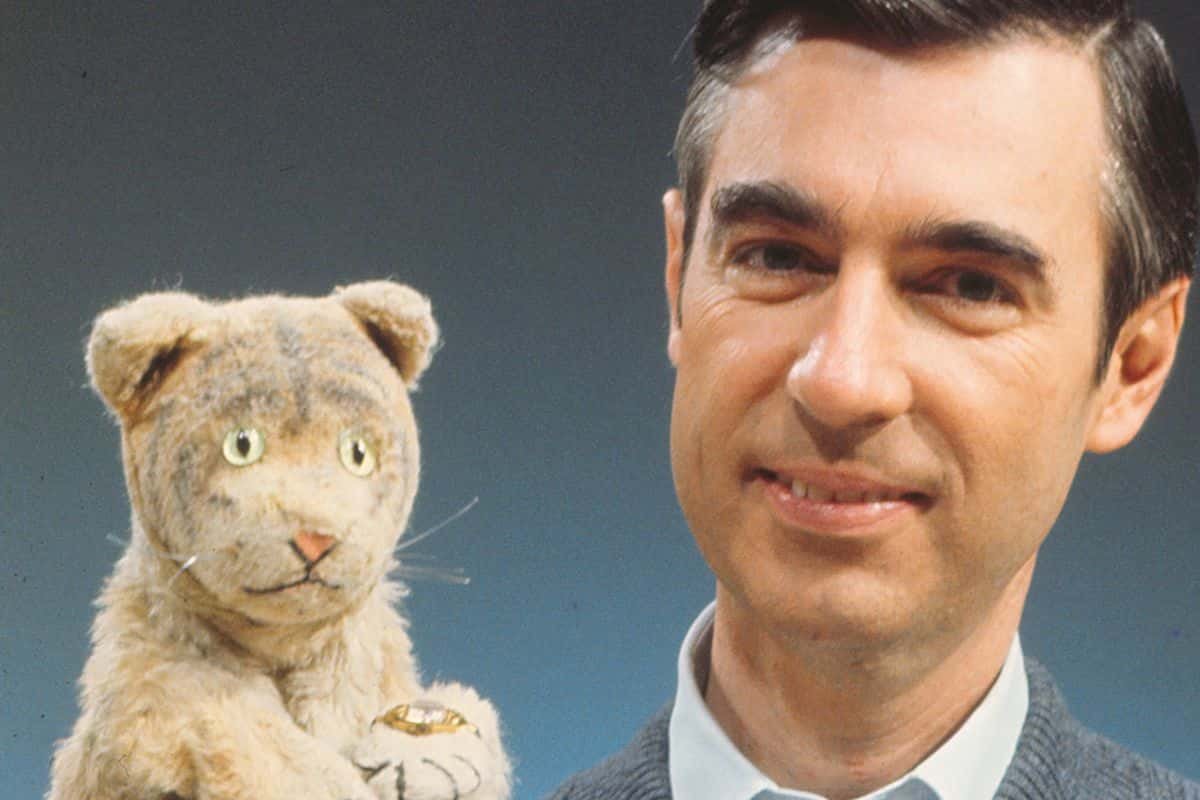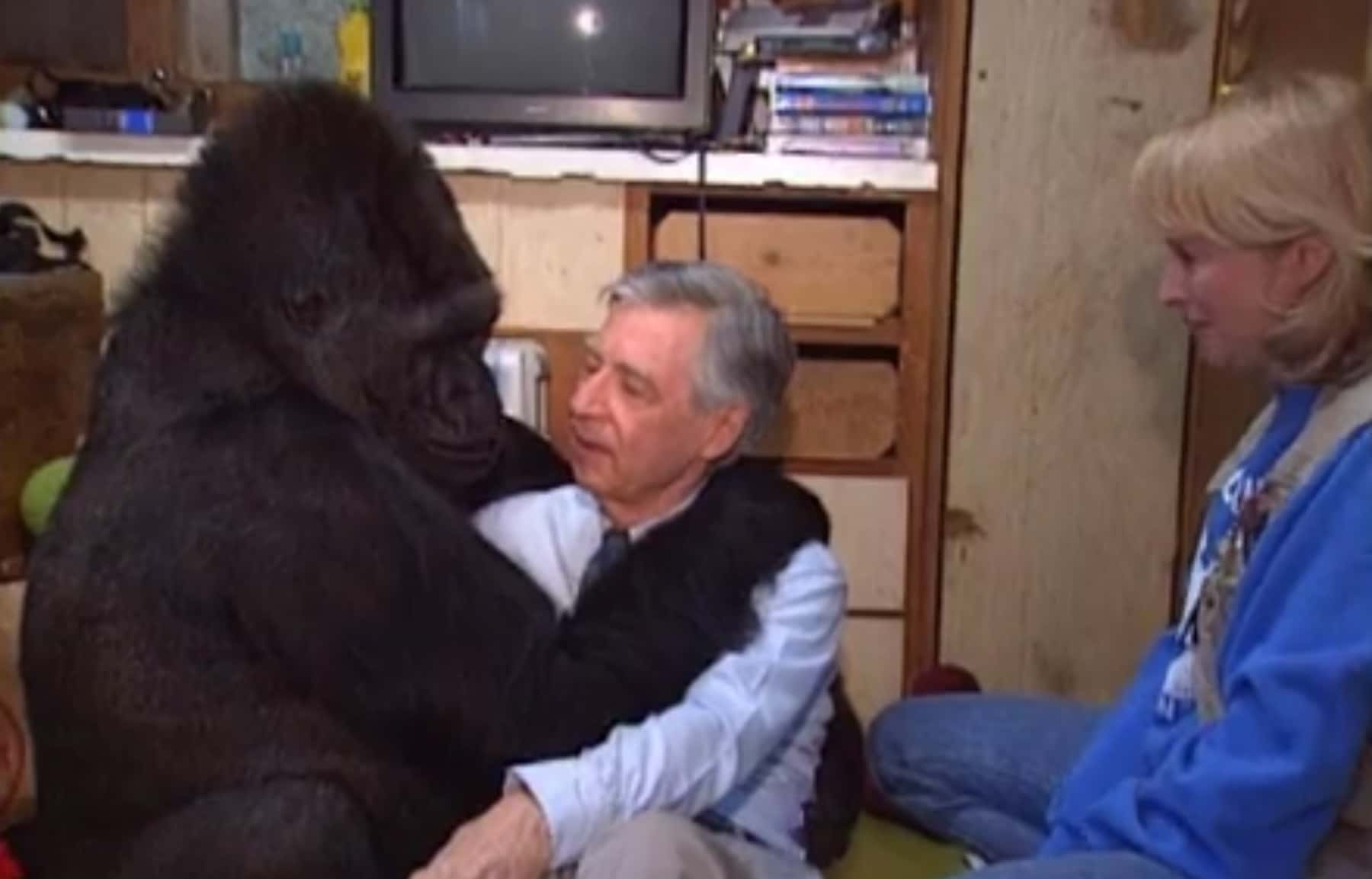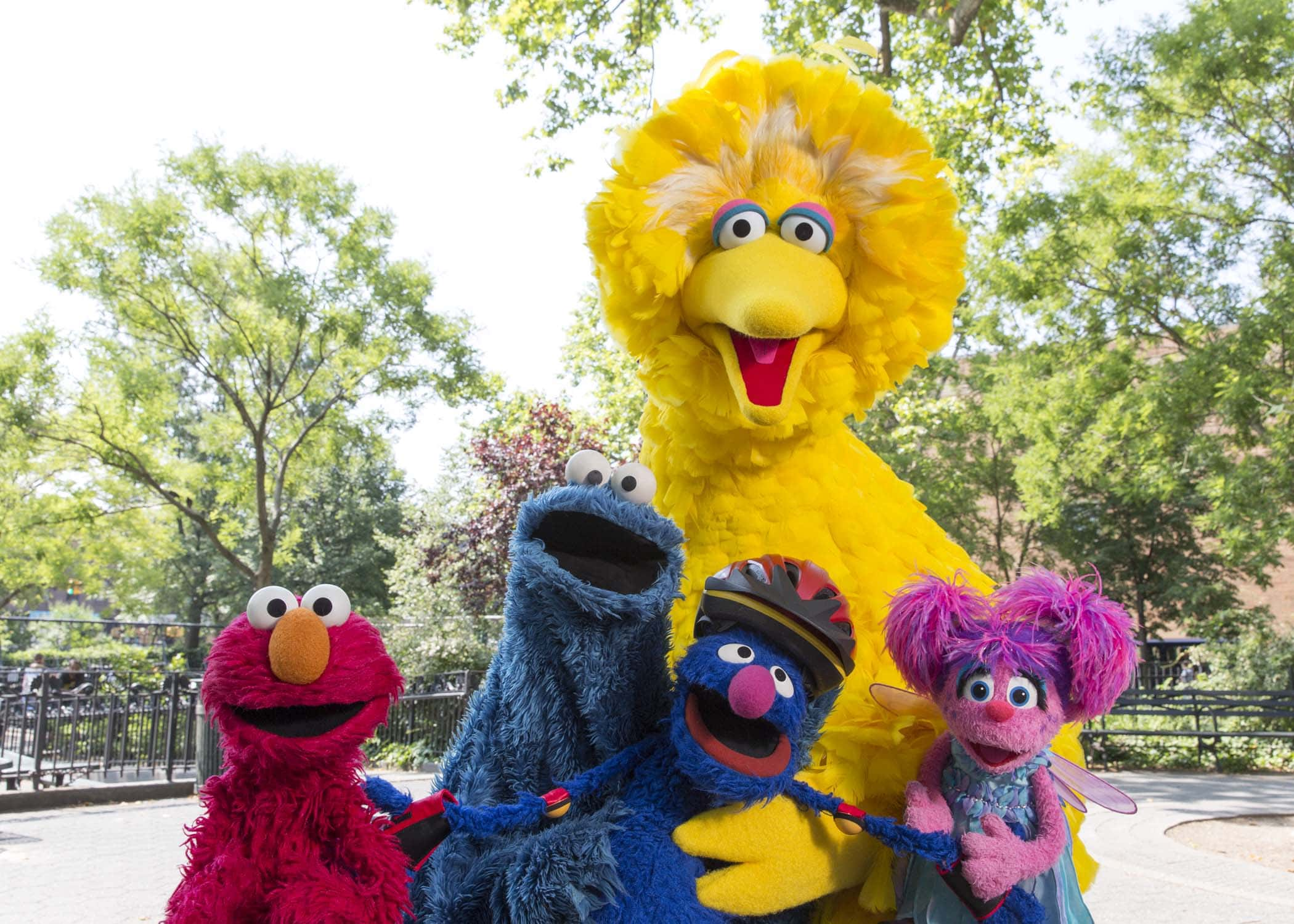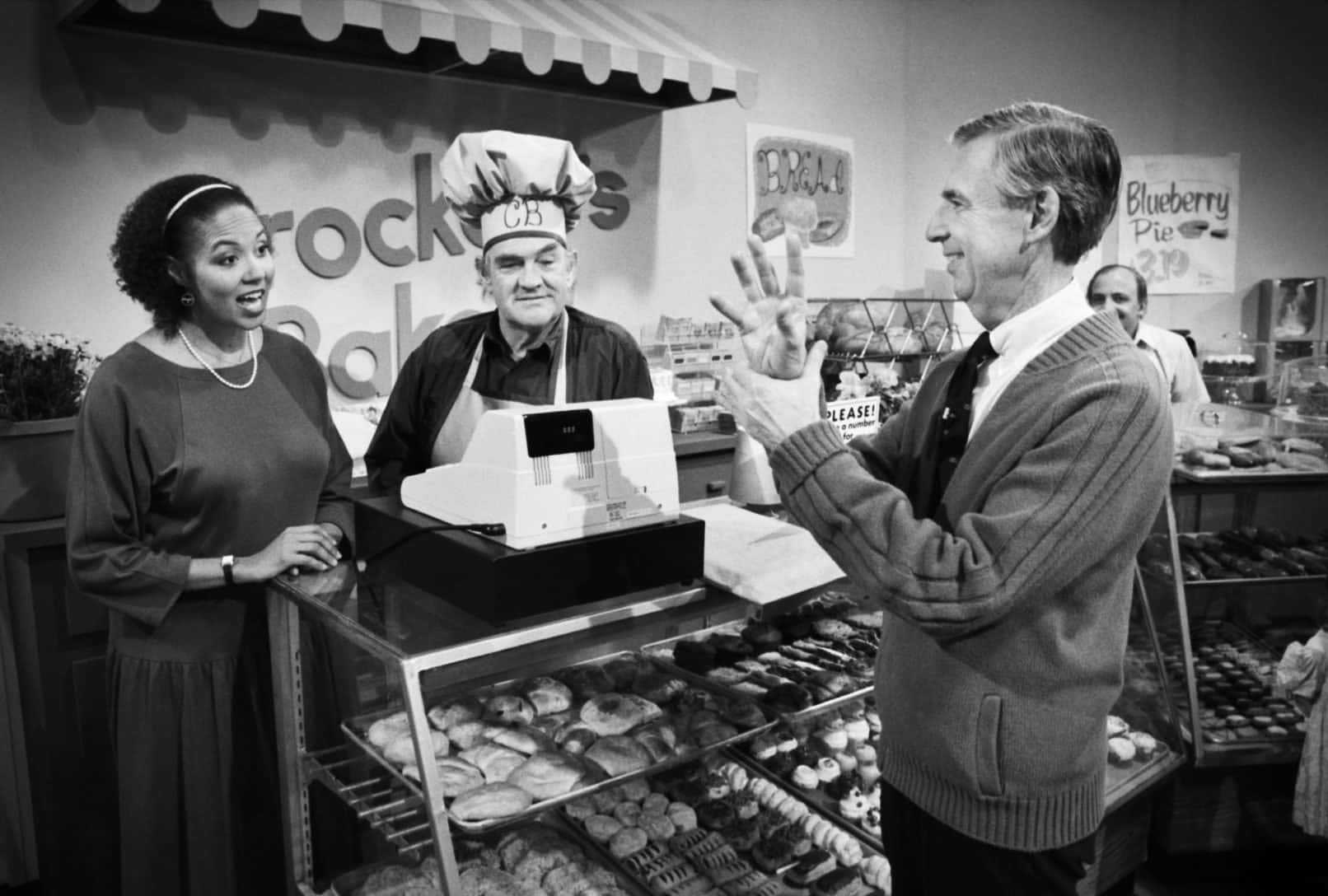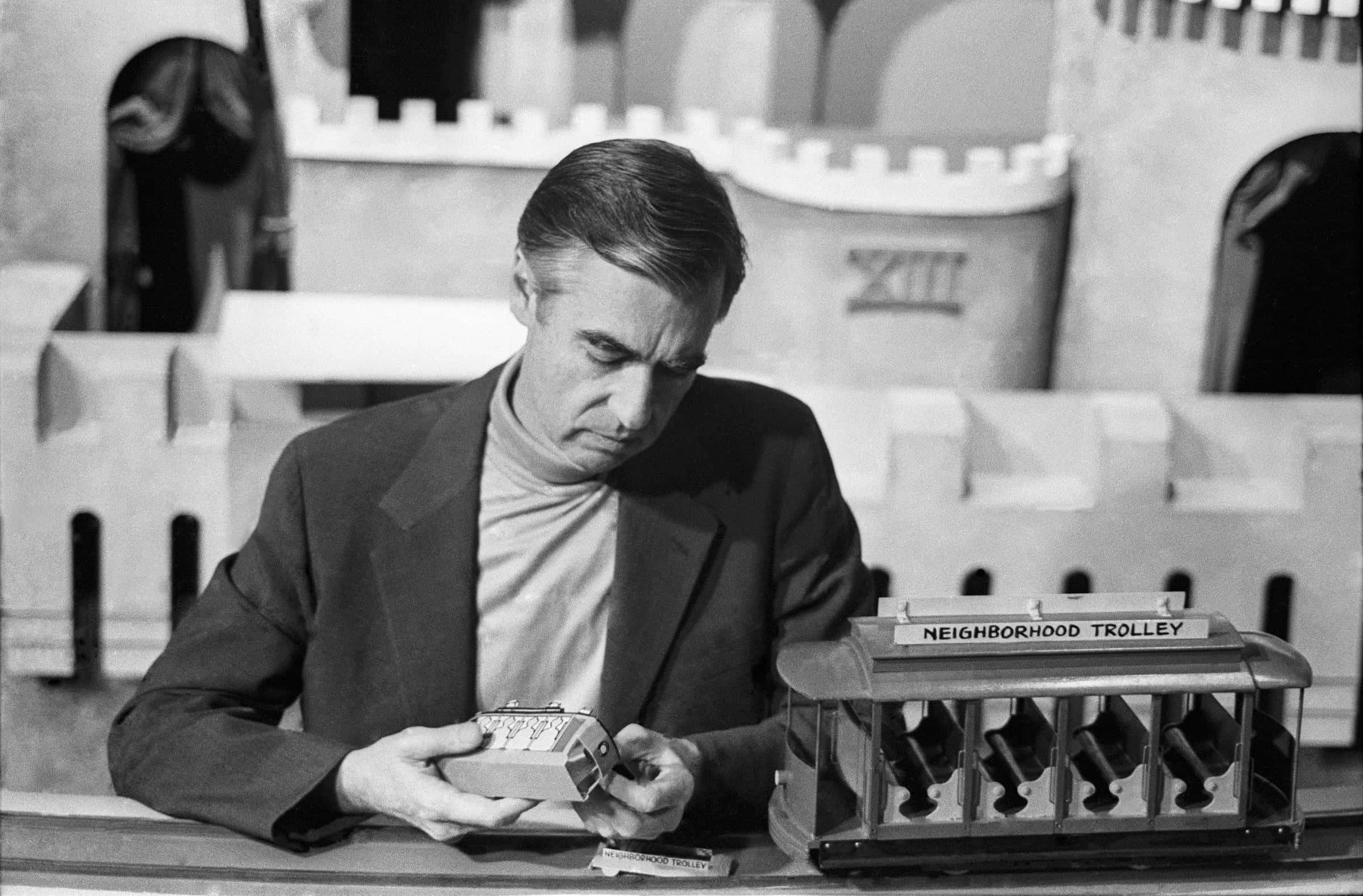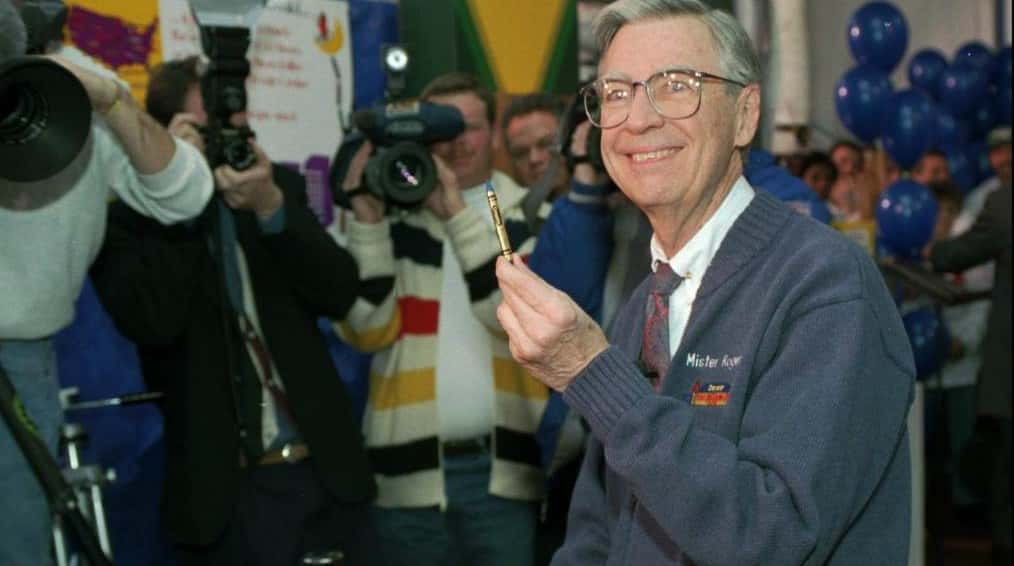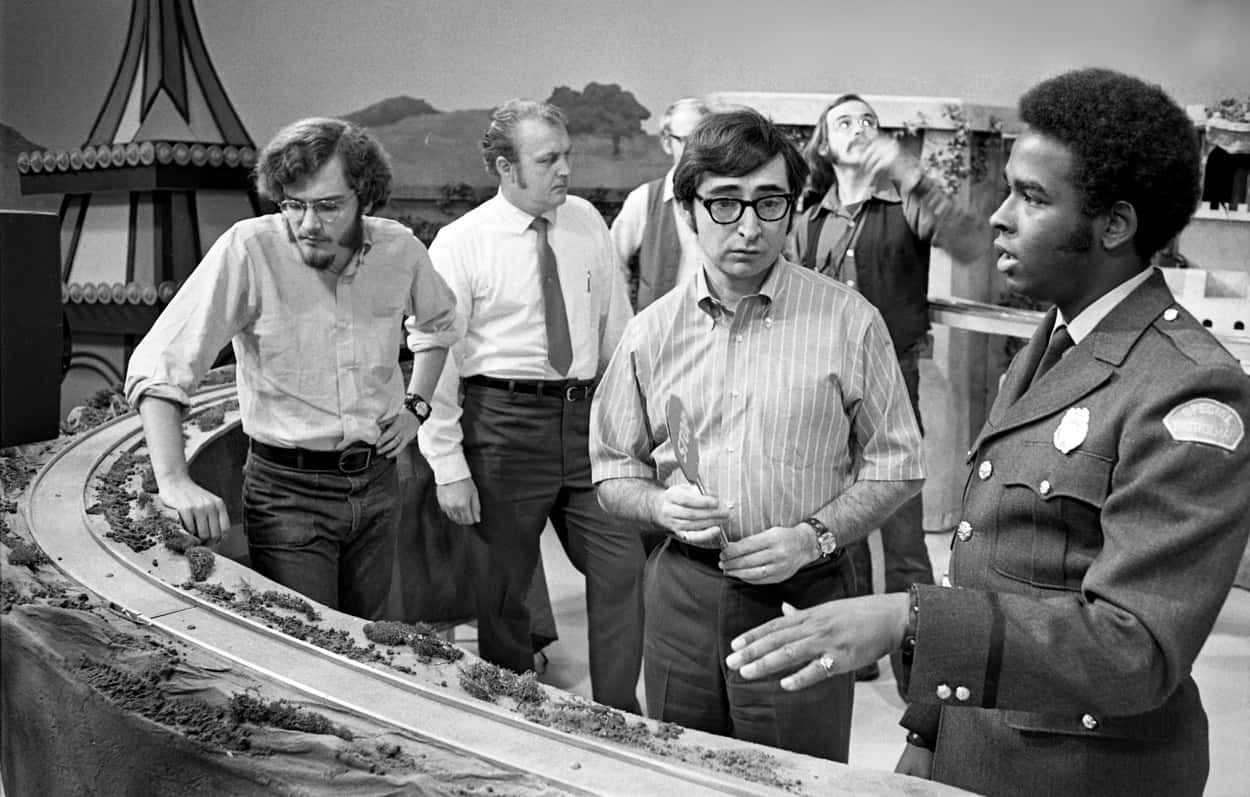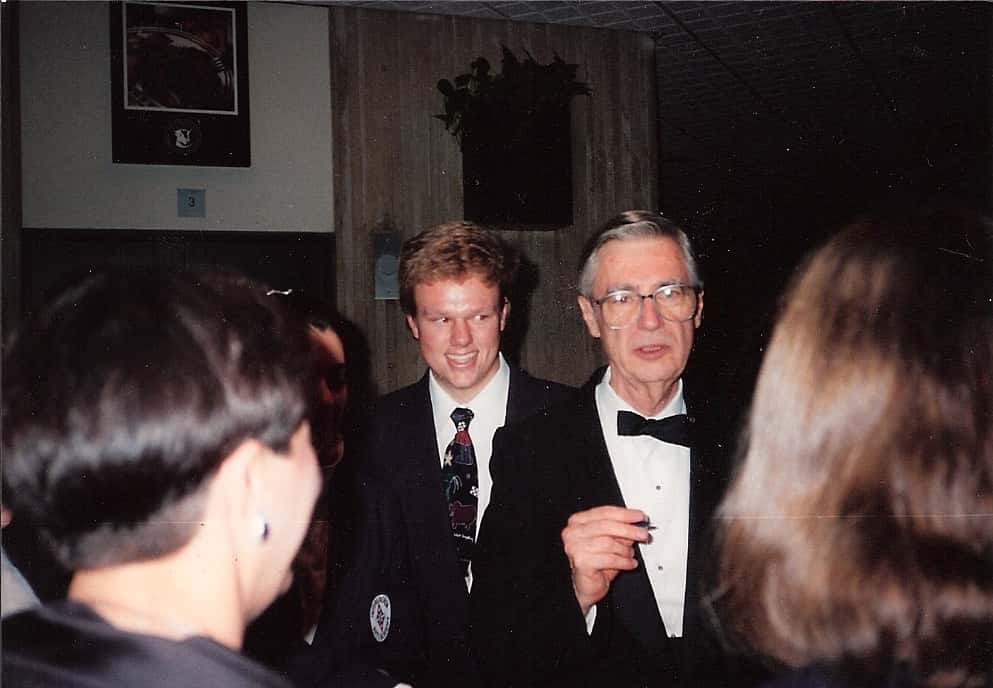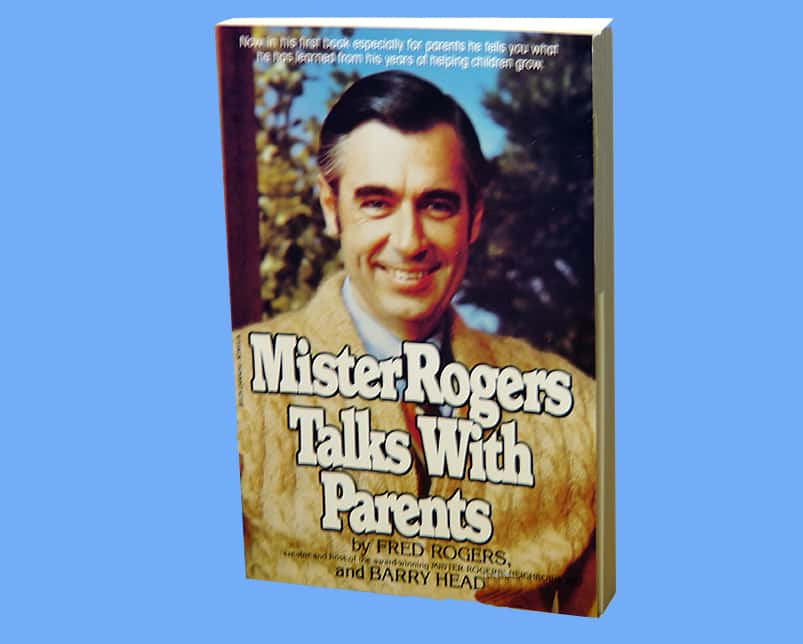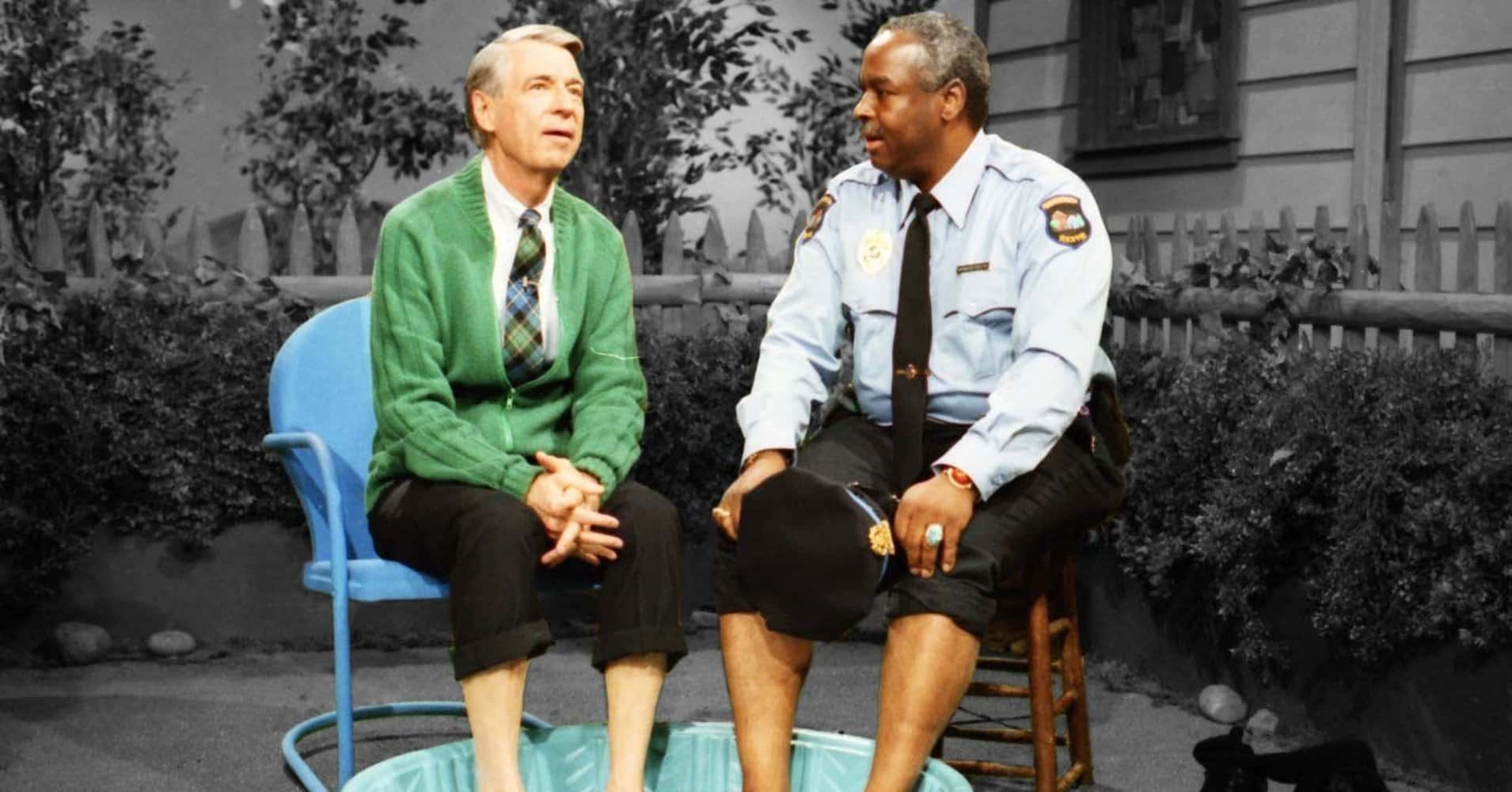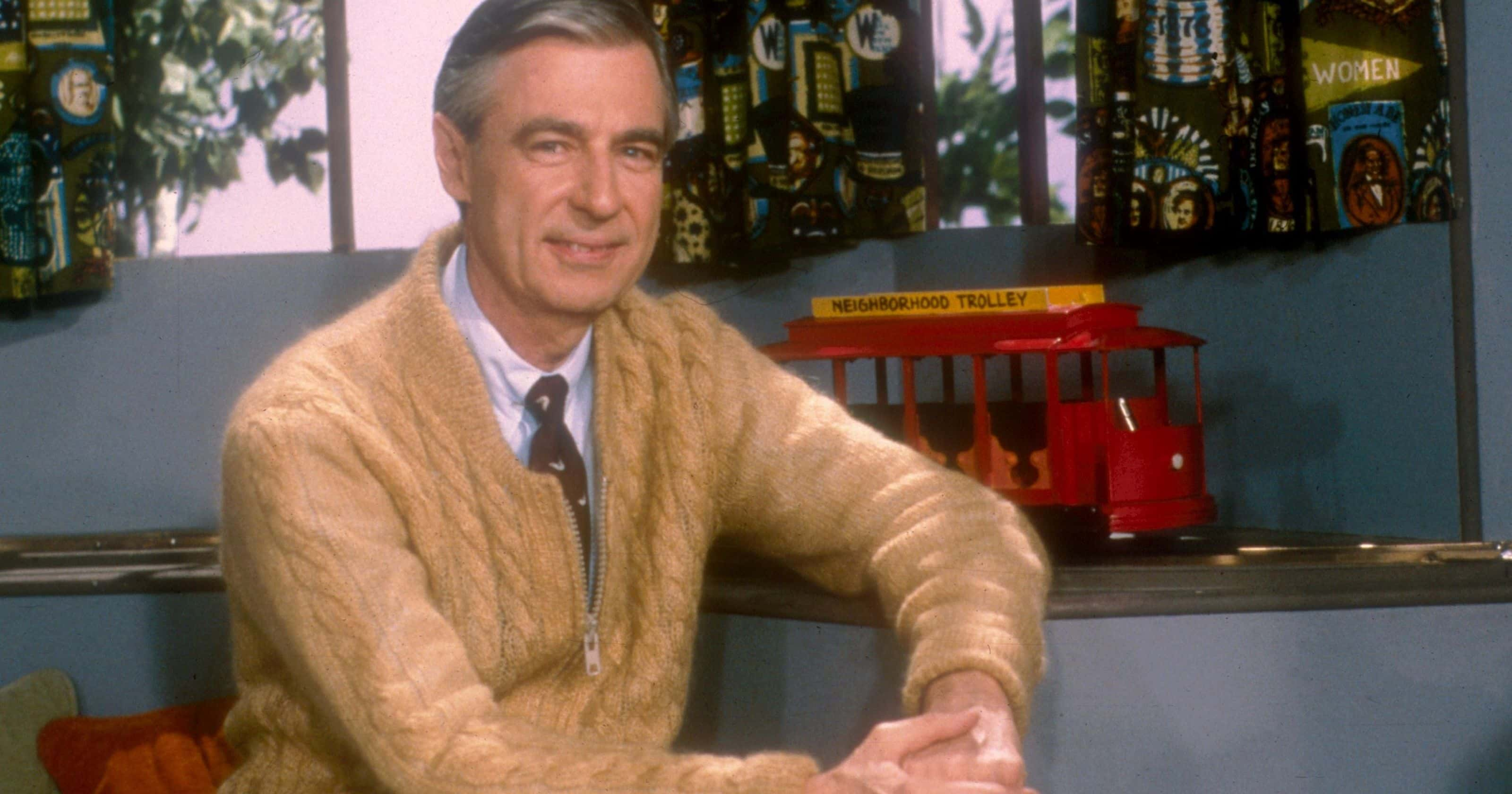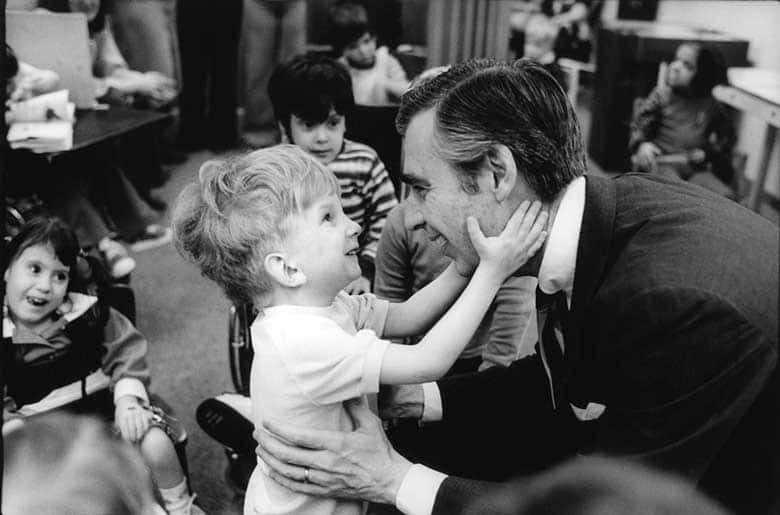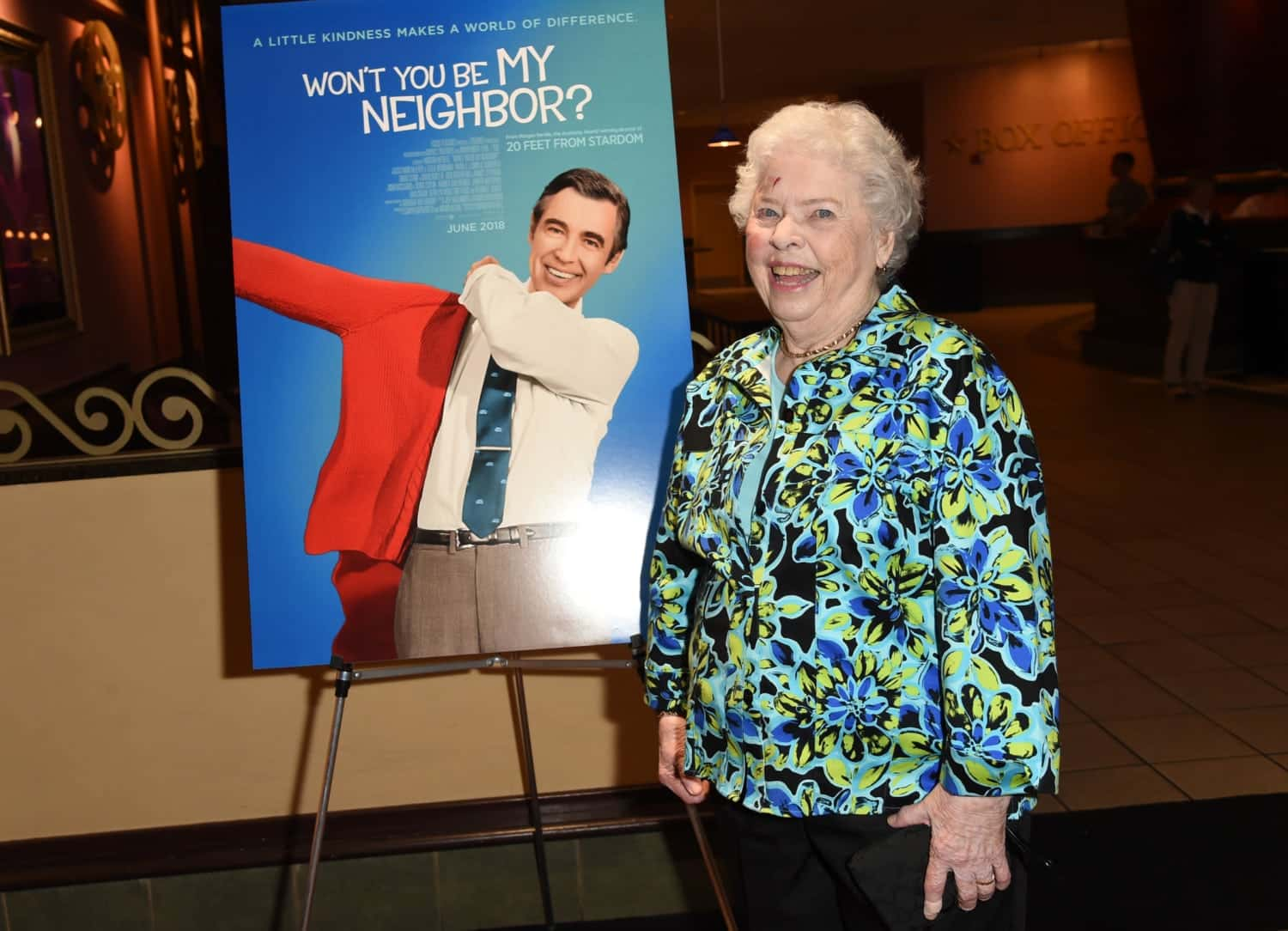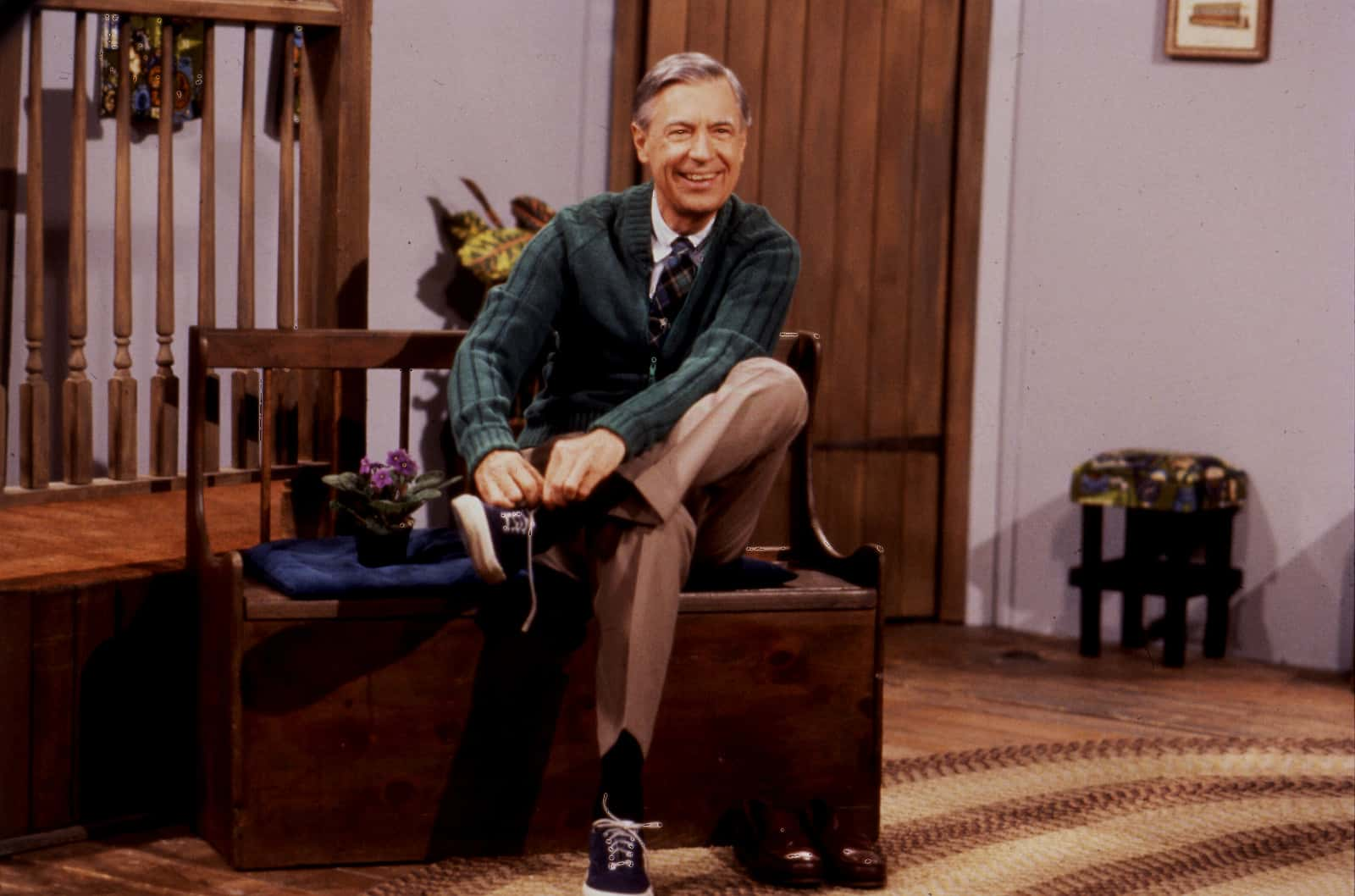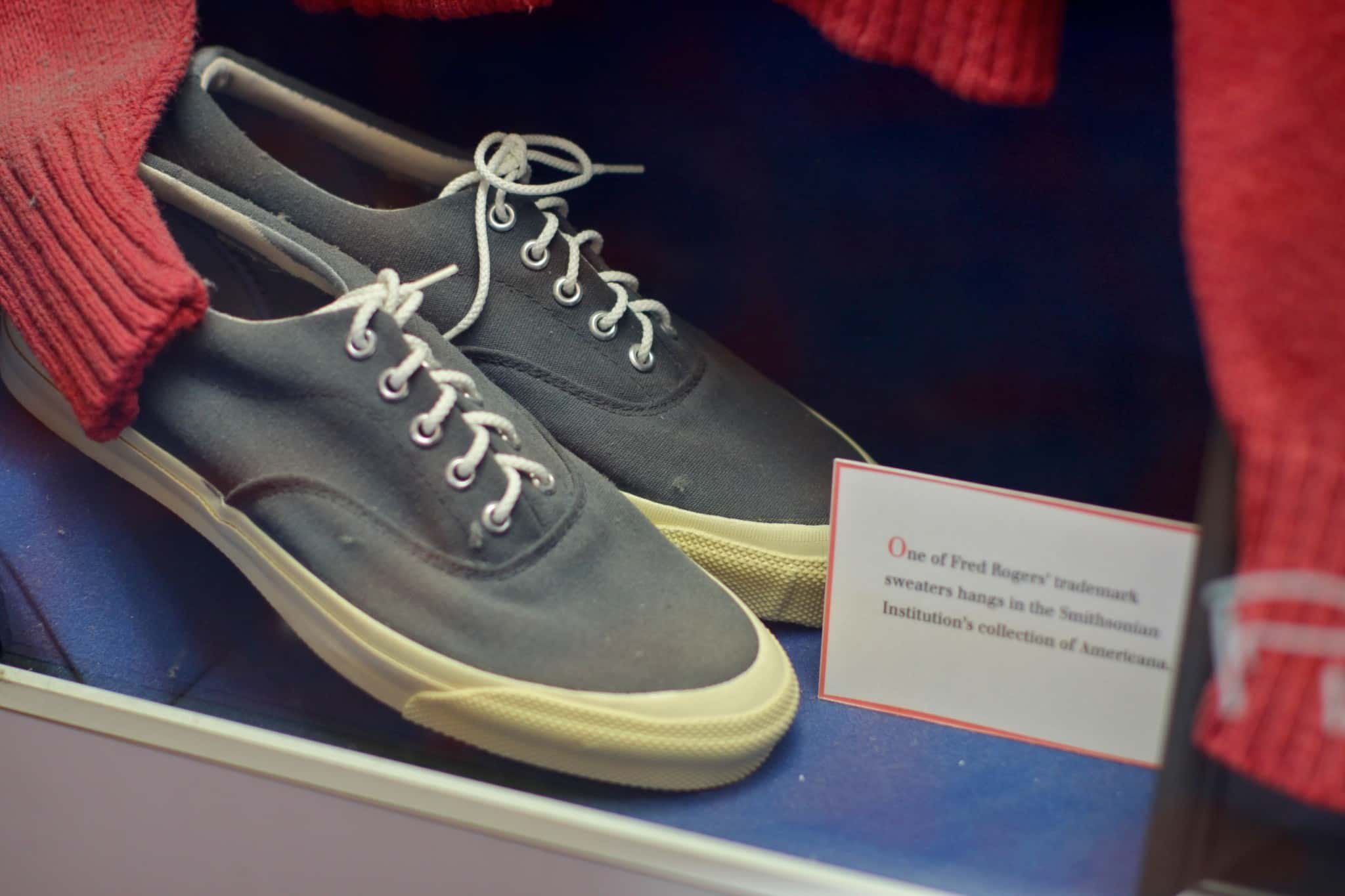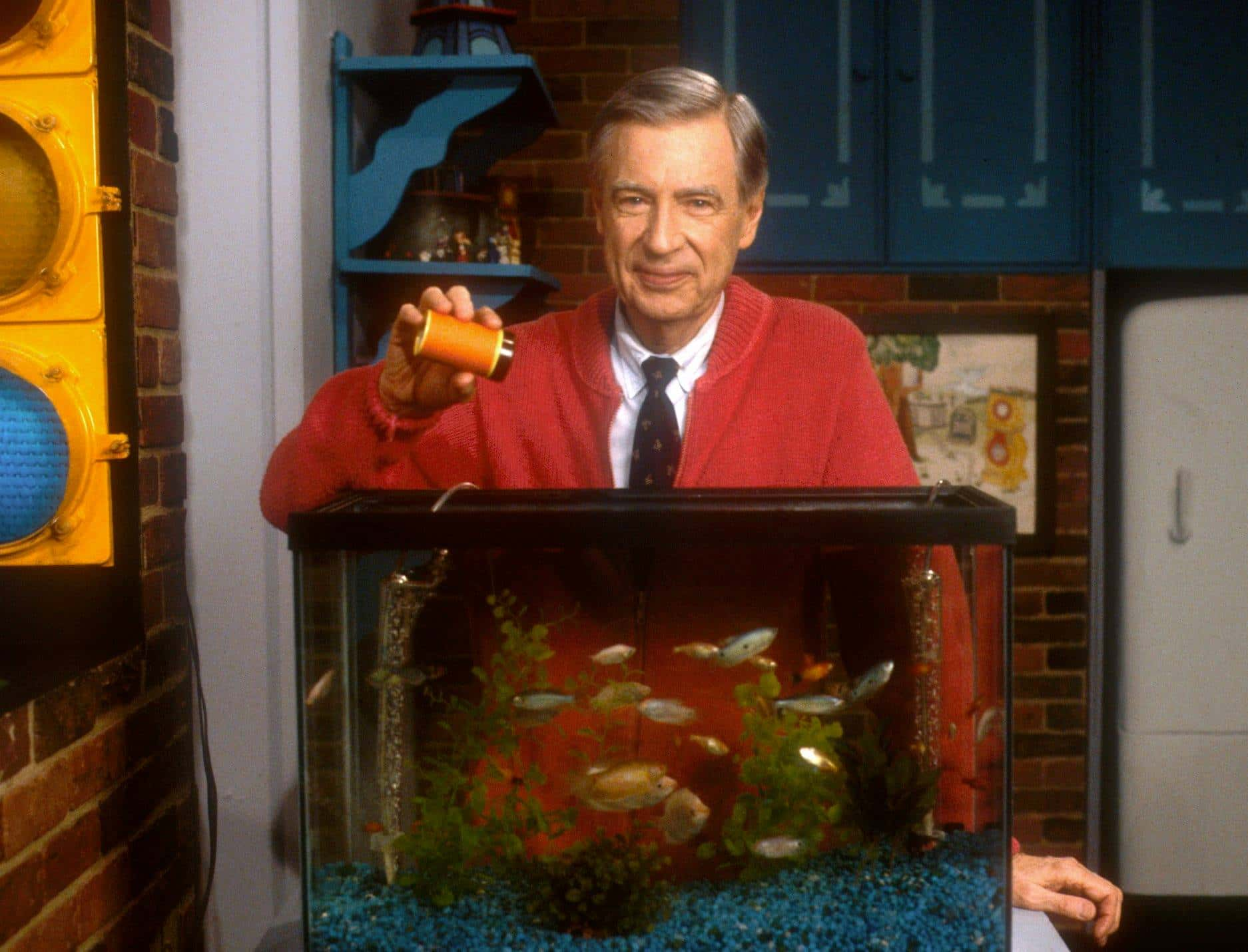"When I was a boy and I would see scary things in the news, my mother would say to me, 'Look for the helpers. You will always find people who are helping.'”—Mr. Rogers
Fred McFeely Rogers was best known as the creator and host of the popular children’s television show Mister Rogers’ Neighborhood, which ran on PBS from 1968-2001. The show featured Rogers as a kind, nurturing personality who spoke to children over the screen about a diverse range of topics in a caring and respectful manner. Over the course of the 30 years the show was on, he became an icon of children’s entertainment and education promoting positive self-esteem, self-control, imagination, curiosity and more. Although he died in 2003, he is still beloved by the generations of children who watched him. The documentary Won't You Be My Neighbor? has Fred back on everyone's minds, so read on to learn a little more about this truly amazing person.
Mister Rogers Facts
42. Motherly Love
One of Mr. Rogers’ trademarks were the different sweaters he wore on the show. What made his sweaters especially unique was that they were all knitted by his mother. According to Rogers, she used to knit roughly one sweater per month, and would give him and his sister the hand-made fruits of her labor. As Mr. Rogers explained in one of the episodes, knitting is one of the ways she said “I love you.”
41. Incorporating the Look
The animated spin-off series of Mister Rogers' Neighborhood, Daniel Tiger’s Neighborhood, features Daniel Tiger sporting a familiar look. In every episode, Daniel Tiger wears a red sweater and sneakers as a nod to Mr. Rogers, who also sported the sweater and sneakers combo in his show.
40. Canadian Connection
Before there was Mister Rogers’ Neighborhood, Rogers first hosted a 15-minute children’s show on CBC television in Canada called Misterogers. The show is considered to be an early prototype of what eventually became the show we all know and love, but it was also important because it launched the career of another beloved children’s entertainer (at least in Canada): Ernie Coombs, better known as Mr. Dressup, was one of the puppeteers on Rogers’ first show, and in 1964, he launched his own show, Mr. Dressup, which ran for 29 years.
39. Barrier Free Zone
Mr. Rogers’s office at WQED was missing a typical piece of office furniture—there was an armchair and a sofa, but there was never a desk. Though the office was tiny, that wasn’t the reason for a lack of desk. Mr. Rogers felt that having a desk would be too much of a barrier between himself and others, and that was definitely not something he wanted.
38. Dual Purpose
If you’ve ever worn dress shoes, you may have noticed that it’s pretty hard to walk quietly. Mr. Rogers understood that having too heavy a step would make moving around backstage very difficult, not to mention that it would break the spell of the imaginary world he was creating. When the trolley rolled in, Rogers would step behind the scenes to bring his characters to life. Wearing canvas sneakers allowed him to move around backstage and operate the puppets without kids ever being the wiser. Sneaky!
37. Subway Sing-Along
Taking the subway in New York is usually pretty anonymous, but not so for Mr. Rogers. On one particular day when he was late for a meeting and couldn’t find a cab, he and his colleagues hopped on the subway (because nobody takes a car in New York), figuring that nobody would notice. Boy, was he wrong! The crowd not only spotted Rogers, but they burst into a chorus of the theme song from his show, which showed him just how impactful he was.
 Pinterest
Pinterest
36. Preacher Man
In 1962, Rogers received his Bachelor of Divinity degree and was ordained as a Presbyterian minister, despite not ever planning to become a working minister. He believed strongly in his faith and preached a message of tolerance both on and off the show. He once wrote back to a six-year-old Christian viewer who sent him a letter and a drawing, saying that Jesus is important to him as well, and he hopes “God’s love and peace come through my work on Mister Rogers’ Neighborhood.”
35. Musical Talent
Rogers’ mother used to play the piano, and when he was little he would sing along with her while she played. He soon became interested in the piano as well, and started playing when he was just five years old. Music stayed with him through college, and he earned a Bachelor of Arts in Music Composition in 1951.
34. Writing Back
Amazingly, Rogers used to respond to his fan mail on a daily basis, and made a point of writing something personal back to every fan who took the time to write to him. He also never threw out a single letter or drawing. The letters were often extremely personal, and he treated them like priceless objects.
33. Seeing the Potential
Mr. Rogers was not a fan of the television programming that he saw on the air, and especially shows aimed at kids. For that reason alone, he decided to get into television. He recognized the power that television had to speak to its audience, and he admitted that he got into it because he hoped that “there was some way of using this fabulous instrument to be of nurture to those who would watch and listen."
32. Too Commercial
The same passion that drew Rogers into television was the same thing that led him to quit his first job with a children’s show on NBC. He just couldn’t abide the network’s reliance on advertising and merchandise to support an educational program, so he left and went to work as a puppeteer with WQED—a local Pittsburgh public television station.
31. An Unusual Fan
Not all fans of Mr. Rogers were human. Koko the gorilla, who understood 2,000 words and could converse in American Sign Language, was a huge fan of the show. She’d been watching it since she was a baby, and when he came to see her, she signed to him that she loved his visit. After giving him a hug, she promptly did what she’d seen him do time after time—she helped him remove his shoes!
30. Taking Good Care
For most of his adult life, Rogers worked hard at maintaining his 143 lb weight. He never smoked or drank, and was a strict vegetarian. He went to bed every night at 9:30 pm, and swam every morning. After his swim, he would step on a scale in his bathing suit, cap, and goggles, and check his weight. It read 143 so often, he came to see it as a gift, because the numbers mean I Love You: 1-I, 4-Love 3-You, perfectly fitting for a man whose message was one of love.
29. An Important Virtue
A study by Yale University psychologists contrasted Mister Rogers’ Neighborhood with another iconic children’s show—Sesame Street. The study found that children who watched Mr. Rogers remembered more of the storylines, and were much more patient than those who watched exclusively Sesame Street. Not that Big Bird didn’t have some valuable lessons of his own to offer!
28. False Rumors
Leave it to the internet to pick up false rumors and run with them. Sometime in 1994, rumors started spreading online that Rogers was a sniper in the military, and that he wore sweaters to cover up tattoos on his arms and body symbolizing each of his "kills." These rumors were obviously false, as Rogers was a pacifist and never served in the military (or killed anybody).
 Starvs the forces of evil wikia
Starvs the forces of evil wikia
27. His Other Half
Rogers was married to the same woman for nearly 51 years until his death in 2003. He and his wife Joanne met while studying at Rollins College and were married in 1952. She worked behind the scenes on his show and has honored his memory by being a children’s advocate and encouraging them to become leaders. Her work with children earned her the Great Friend of Children Award from the Children's Museum of Pittsburgh in 2016. Mr. Rogers would have been proud!
25. Lacking Diversity
If there was anything that could be criticized about Mister Rogers’ Neighborhood, it might be the show’s lack of diversity. Whereas “Sesame Street” had an urban setting with racially diverse adults and kids, until 1975, Mr. Rogers only had one African American character on the show. In 1975, Rogers introduced Mayor Maggie, an African American woman, with a white male underling. Hispanic actors, on the other hand, did make occasional guest appearances, but Rogers never added any permanent Hispanic characters to the show.
24. Tomato or Pea?
A fact that few people know about Rogers is that he was red-green colorblind. He couldn’t tell the difference between these two colors, which was ironic since two of his most famous cardigans were red and green. He also couldn’t visually tell the difference between tomato soup and pea soup. One day at lunch, he asked his television partner Josie Carey to taste his soup and tell him whether it was pea or tomato. Rogers liked both, so it wouldn’t seem like it would matter, but when she asked him why it did, he replied “If it's tomato soup, I'll put sugar in it.”

23. Race Relations
Mister Rogers’ Neighborhood began airing in the midst of a major backlash against the Civil Rights Movement—urban violence was causing white residents to leave their neighborhoods in vast numbers. In keeping with his message of tolerance, one of his first episodes featured a visit from his African American neighbor Mrs. Saunders and a small group of her interracial students. The message was one of racial integration, showing viewers that white and black children play and live together in his neighborhood.
22. Black and White
Unlike the major networks who started broadcasting in color in 1968, PBS was a little late to the party. The first season of 130 episodes aired in 1968 entirely in black and white. It wasn’t until the following season in 1969 that the show was produced in color.
21. Go Ahead and Record It!
When the VCR came out, Mr. Rogers famously spoke in support of people recording his show and argued for their right to do just that in the Supreme Court case Sony Corp. of America vs Universal City Studios, Inc. The opposition was trying to argue that recording a TV program was a copyright infringement, but Rogers didn’t think so. The Supreme Court later said that his testimony was key in helping them reach their final decision. Basically, you have Mr. Rogers to thank for your PVR.

20. His Authentic Self
Except for one time when he guest starred on Dr. Quinn, Medicine Woman as a preacher, he never played anyone other than himself on television. He always acted exactly the same on and off screen for two simple reasons: First, he believed that presenting “your honest self” is the greatest gift you can give a person, and second, that kids could easily tell if you’re being phony. Very true!
 Tumblr
Tumblr
19. Milestone Moment
When Crayola Crayons was selecting the person to make their billionth crayon, they could think of no one better than Mr. Rogers. The blue ribbon crayon was made at the Binney & Smith’s Forks Township plant with Rogers on hand to pour the wax. He was chosen for his contributions to children and his overall positive influence on families, making him the perfect fit.
18. Changing the Perception
Just a couple of months after the visit from his black neighbor, Martin Luther King was assassinated, and children were developing a negative image of police. Wanting to change that perception, Rogers debuted Francois Clemmons as a black police officer who kept everybody in the neighborhood safe. This radical idea was in extreme contrast to the images of race riots that were dominating the news at the time.
17. Feeling Frazzled
We all feel a little bit anxious now and again, and Rogers was no exception. Whenever he started feeling overwhelmed or worried, he would sit down at his piano and play the chords to the show’s theme song to overcome his anxiety.
16. Mr. Rogers Goes to Washington
Back in 1969, when the government wanted to cut funding to public television, Mr. Rogers went to Washington to testify before Congress and get them to change their minds. In a speech worthy of Mr. Smith, he spoke for about five minutes, explaining how TV could give kids hope and make them better citizens. His impassioned plea melted the hearts of the committee, and not only was the funding not cut, but it was actually increased from $9 to $22 million.
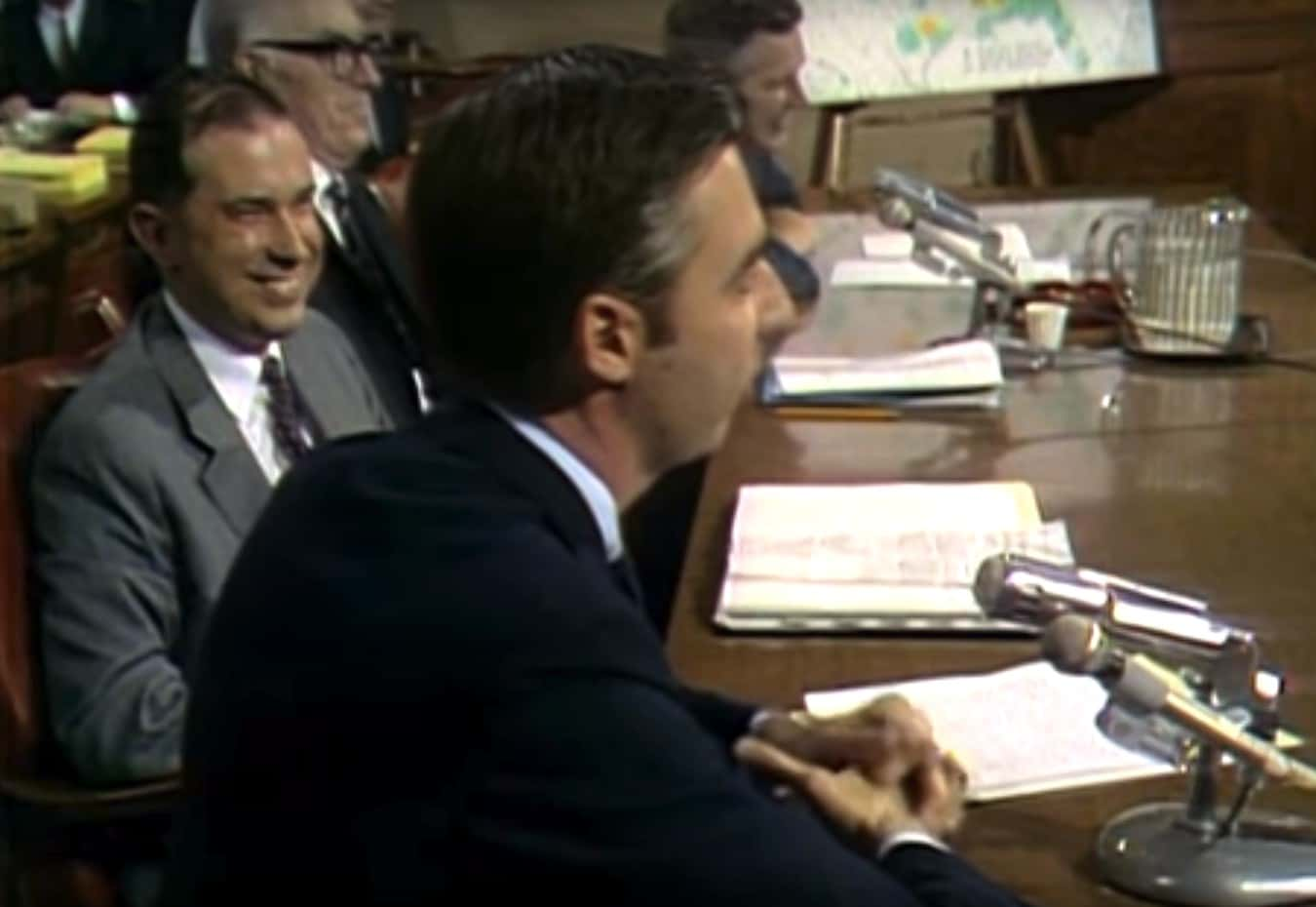 Youtube
Youtube
15. Accepting All People
Much to the annoyance of fundamentalists, Rogers always refused to criticize anyone for their beliefs, regardless of race, sexuality or religion. Instead, he would turn to them and say “God loves you just the way you are,” proving that he practiced what he preached.
14. Making Friends
Rogers had a knack for befriending people wherever he went. He genuinely loved to learn about other people’s stories, and would often turn an interview around so that he was the one "interviewing" the reporters, instead of talking about himself. He was known to take pictures with the reporters, compiling an album of them, and for checking in with them occasionally to find out what was happening in their lives.
13. How to Talk to Children
Children weren’t the only ones to benefit from Mr. Rogers’ wisdom. He produced a series of specials aimed at parents called "Mr. Rogers talks to Parents about X,” the X being the important topic of the day. The specials were intended to help parents talk to their kids about topics like adoption, divorce, and emotions, and to offer strategies on how to answer any questions they might have.
12. Touchy Subject
Mr. Rogers broke a lot of racial barriers on his show, including showing Officer Clemmons (who was black), putting his feet in the same wading pool as Rogers at a time when racial integration wasn’t yet common. On more than one occasion, Clemmons suggested that it would be “helpful and realistic” to portray an interracial relationship on the show, but it didn’t come to fruition. Clemmons remembers that Rogers never specifically opposed the idea, but assumed that he was worried about angering his more socially conservative viewers.
11. A Special Encounter
Mr. Rogers meant a lot to many people, but possibly no more so than to Anthony Breznican, a senior writer at Entertainment Weekly who had a once-in-a-lifetime encounter with Rogers. As a child, Breznican was a fan of the show and watched it until he outgrew it. While in college, he was having a particularly rough time and rediscovered the magic of the show. A few days later, totally by fluke, Breznican ran into Mr. Rogers getting off an elevator, and he had to tell him how much he meant to him. Rogers then invited him to tell him what was bothering him. He explained how his grandfather had died, and Rogers, being the amazing man he was, sat with him and offered him comfort when he needed it. A few years later, when Breznican heard of Rogers’ death, he cried for the loss of a very special neighbor. If that isn’t enough to bring tears to your eyes, I don’t know what will!
10. An Ode to Childhood
When Rogers was a child, he enjoyed riding on the trolleys in his hometown of Pittsburgh. As an adult, he drew on that experience to create the character of “Trolley.” A life-size replica trolley ride operated in an amusement park in Ligonier, Pennsylvania, where Rogers himself went as a child. The ride took kids through the Land of Make Believe, with animatronic puppets voiced by Rogers and friends. Rogers even wrote the script for the ride as a tribute to the park. The original trolley is on display at the Canadian Broadcasting Centre in Toronto, Ontario, and various replicas can be found online.
9. Making it Perfect
One thing you could never ask or expect Rogers to do on his show was ad-lib anything. He planned everything exactly, believing it to be important that each word was carefully thought out. Some people might call that anal, but you can’t blame him for wanting to give children excellence.
8. The Importance of Patience
On one episode of his show, Rogers invited a marine biologist to come on and put a microphone in the fish tank so children could hear how fish eat. There was just one teensy problem: the fish weren’t hungry. The marine biologist tried to encourage the fish to eat, but Rogers waited quietly. Anyone else might have insisted on re-taping the scene, but Rogers left it in so he could teach kids about being patient (and possibly their parents too).
7. Join Us!
Reporters weren’t the only people that Rogers befriended in his travels. When he learned that his driver was going to have to wait outside for two hours while he visited the home of a PBS executive, he insisted that the driver come into the house and join them. On the way back, he sat up front beside the driver and asked to come into his home and meet his family. The driver said yes and it ended up being one of the most amazing nights ever. Rogers played jazz piano and bantered with the family late into the night, and ended up keeping in touch with the driver for the rest of his life.
6. Remember Me
In a 1999 interview, Rogers stated that he’d like to be remembered as “a compassionate human being who happened to be fortunate enough to be born at a time when there was a fabulous thing called television that could allow me to use all the talents that I had been given.” I’d say he got his wish!
5. Time to Relax
If you grew up watching Mr. Rogers, you may have noticed that the first thing he did each show was change from his work jacket to his sneakers and sweater. The show aired late in the afternoon when most adults were coming home from work, and Rogers’ idea was to show children that it was time to relax and spend some time together.
4. Ending as it Begins
The ending of Mr. Rogers’ show was the same as the beginning, but in reverse. At the start of the show, he would sing his song while taking off his work jacket, putting on his sweater, and changing his work shoes for sneakers. At the end of the show, he would sing a song while taking off the cardigan and the sneakers, and putting his work shoes and jacket back on.
3. Seeing Within
As a child, Mr. Rogers was overweight and shy, and was often bullied as a result. He recalled crying to himself when he was alone. To make himself feel better, would make up songs on the piano. This experience led Rogers to search for the “essential invisible” within every person he met. I wonder if he found it in his bullies!
2. Taken and Returned
In 1990, Rogers had his car stolen while he was babysitting his grandson. The story was picked up by all of major media outlets in town, and 48 hours later, the car was returned back to the spot where they stole it from with a note. The letter read "If we'd known it was yours, we never would have taken it." They did keep the director’s chair with his name on it, so they must not have been able to resist taking a souvenir.
1. The Fish Are Fine
Whenever Mr. Rogers fed the fish on his TV show, he would state out loud that he was feeding the fish. He did so because of a letter he received from a five-year-old blind girl who was concerned that the fish were hungry and obviously couldn’t see whether or not he was feeding them. In the first show after the letter, he reassured his young friend that the fish were indeed taken care of, and even managed to turn it into a lesson about compassion, stating “It's good to know that fish and animals and children are taken care of by those who can, isn't it?"
Sources: 1, 2, 3, 4, 5, 6, 7, 8, 9, 10, 11, 12, 13, 14, 15, 16, 17

